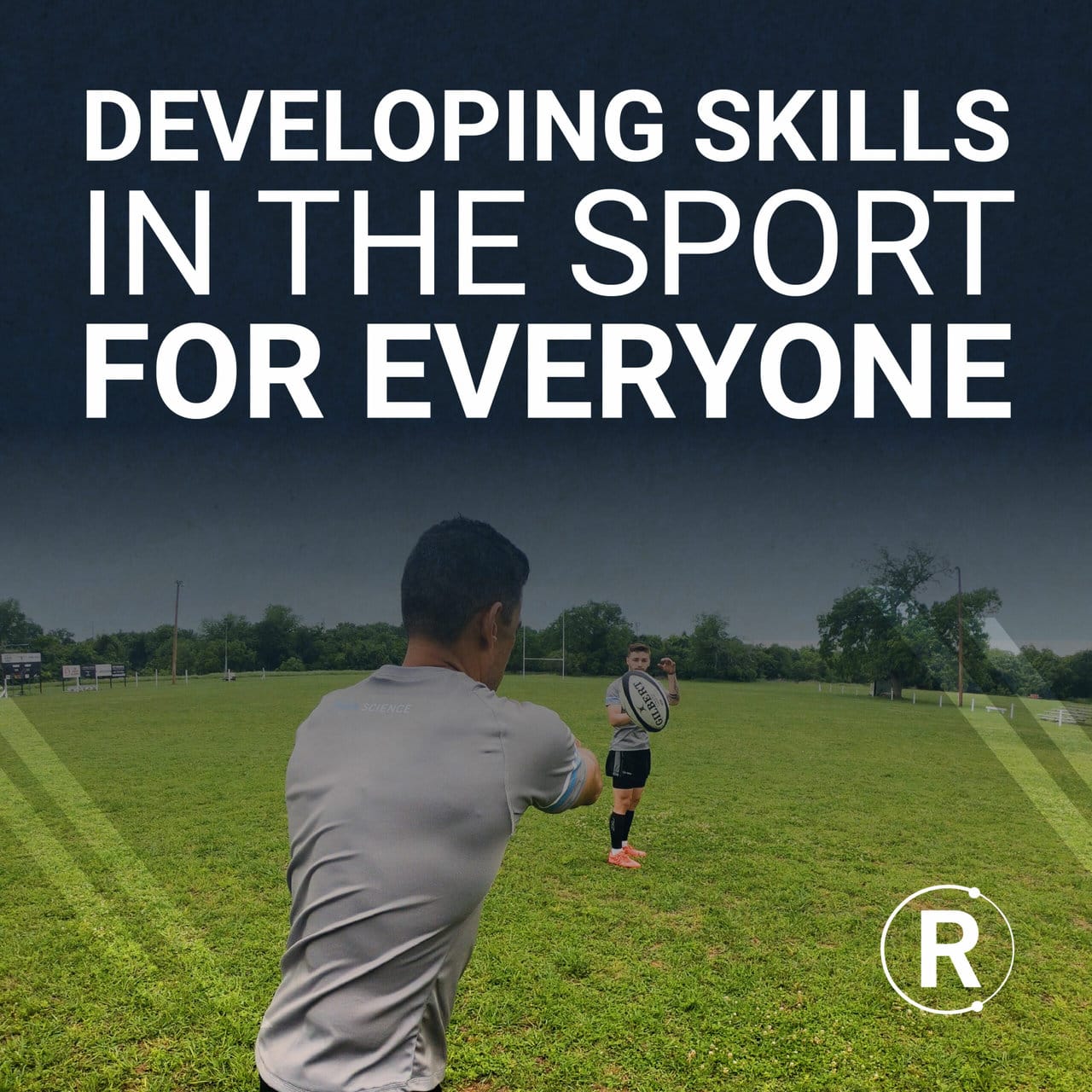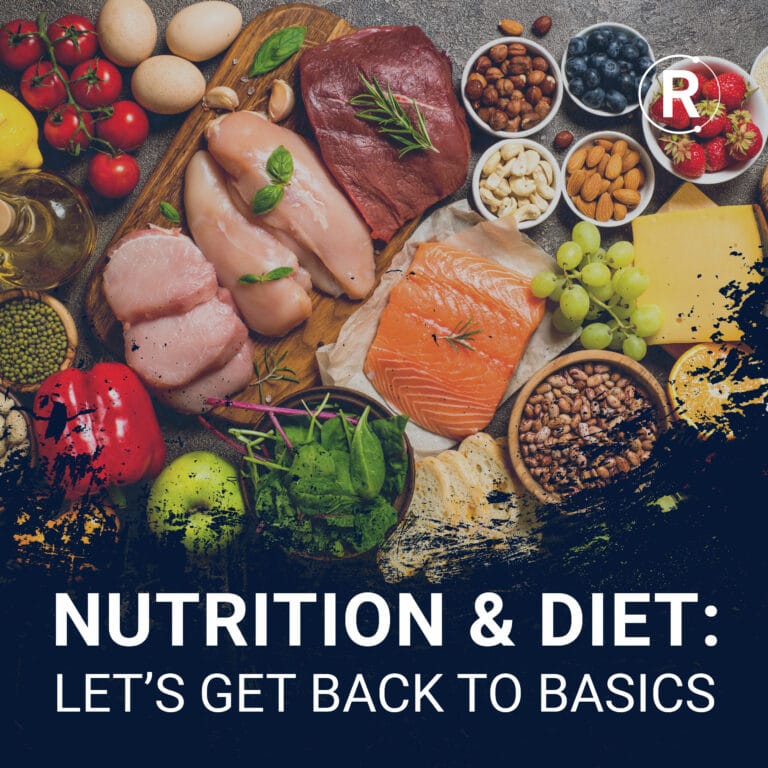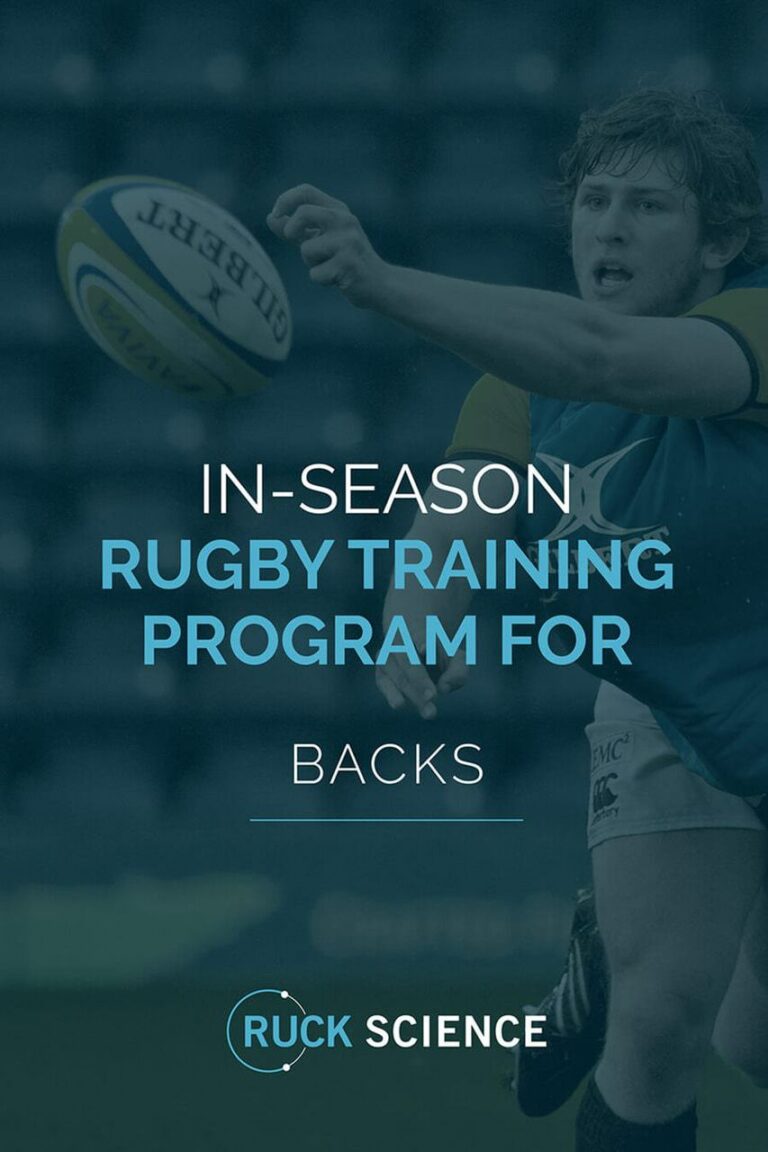
Warming up and cooling down are critical but often overlooked parts of playing and training for rugby. Failing to warm up and cool down properly can significantly affect your performance and recovery.
In this article, we explain the importance of these components and discuss what makes up an effective warm-up and cool-down.
Warming Up
If you want to play or train at your best, you must warm up before you begin. Warming up prepares your muscles, joints, nervous system, and energy systems for what you are about to do. It ensures your body is “firing on all cylinders” so you can perform at the highest level.
The benefits of warming up include:
- More mobile joints
- More pliable, elastic muscles
- Improved blood flow to working muscles
- Increased oxygen saturation and faster removal of waste products
- Increased mitochondrial activity for more energy
- Increased motor unit activation for greater strength, power, and speed
- Faster reaction times
- Enhanced coordination
Warming up may also reduce your risk of injury, as cold muscles and joints are easier to damage. However, injuries can still happen whether you warm up or not, so this benefit is hard to quantify.
To be effective, a warm-up should have the following components:
Pulse raiser – this is the part of the warm-up that makes you warm! It can be any physical activity that leaves you slightly out of breath and sweating lightly. Good options for ruggers include 5-10 minutes of easy jogging, rowing, air-bike, or elliptical trainer. Full-body activities are generally best.
The pulse raiser should be progressive, i.e., start easy and increase in intensity over several minutes. For example, you could walk, jog, and run around the rugby field.
Joint mobilizer – mobility exercises increase the active range of movement in your joints. Exercises like shallow progressing to deeper squats and lunges, waist twists, side bends, shoulder shrugs, head rolls, and arm circles increase synovial fluid production, lubricating and nourishing your joints.
Dynamic flexibility – most dynamic stretches don’t look like stretches at all. Rather than holding the stretched position for 30-60 seconds, you move in and out of the stretch to extend but not relax the target muscles.
Some dynamic stretching exercises include forward and cross-body leg swings for the hamstrings and hips, butt kickers for the quadriceps, and vertical and horizontal pushes and pulls for the chest, shoulders, and back.
Mobility and dynamic flexibility often overlap as some exercises address both these needs.
Note: Static stretches are not usually included in the warm-up. They can inhibit muscle contractions and lower blood flow and your temperature, undoing the benefits of the pulse raiser.
Exceptions to this rule are when dealing with mild injuries or easing off a hyperactive muscle that might interfere with the performance of the main activity, e.g., stretching the pecs before a back workout.
Activity-specific movements – the final part of your warm-up depends on what you are about to do. For example, before a gym workout, you may do muscle activation exercises like band pull-aparts or resistance band side steps, followed by a couple of light sets of your main lifts.
In contrast, before playing rugby, you may practice some passing and kicking, do some strides (short, submaximal speed sprints), practice some set pieces, or do some light contact drills.
The length of your warm-up depends on several factors, including:
- The intensity of the activity you are warming up for
- How warm you are and the ambient temperature
- Any aches and pains you may have
- Your age – older players often benefit from longer warm-ups
However, 10 to 15 minutes should be sufficient for most gym workouts, and 15 to 30 minutes should be enough for rugby.
Cooling Down
Once you’re warmed up, it’s time to train or play. Needless to say, this will take a lot out of your body. Subsequently, it can be very tempting to end your workout or match and then just head for the showers, bringing the activity to an abrupt end.
Stopping so quickly can leave you physically and emotionally ramped up, which may interfere with recovery. Cooling down helps return your body to its pre-activity state so that recovery can begin sooner.
The effects of cooling down include:
- Fewer aches and pains
- Less muscle soreness/tightness
- Accelerated removal of waste products from muscles
- Quicker recovery so you can train/play again sooner
- Better mood
- Improved sleep
It’s worth noting that very little scientific evidence supports the effects of cooling down after training or playing (1). However, plenty of anecdotal evidence supports the effectiveness of cooling down, so it’s probably still worth doing.
So, how do you cool down? It’s basically the reverse of the warm-up. The components of an effective cool-down are:
Pulse lowerer – the pulse lowered brings your heart and breathing rate back down to normal. It also promotes systemic blood flow and the removal of waste products from your muscles.
The pulse lower should be graduated, starting quite brisk and then decreasing in intensity over several minutes. For example, you could run, jog, and then walk around the rugby field.
Static stretching – while static stretches are generally unsuitable for the warm-up, they’re precisely what’s recommended for the cool-down. Static stretches promote relaxation and help alleviate muscle tightness.
Static stretches are usually held for 30-60 seconds, with longer stretches being best for improving flexibility. As the name suggests, static stretches are held statically, i.e., with the muscle in a lengthened position.
While you SHOULD gradually ease into a deeper stretch, your movements should be smooth and never forced or jerky. Forcing a stretch makes it less effective and increases your risk of injury. Ease off if you feel your muscles shaking or burning.
You don’t need to stretch every muscle for the same duration and should tailor your stretches according to your needs. For example, you may want to focus on your legs after a lower body workout but stretch your entire body after a rugby game or practice.
Muscles that ruggers should focus on during the cool-down include:
- Calves
- Quadriceps
- Hamstrings
- Abductors and adductors
- Hips and glutes
- Abs and lower back
- Pectoralis major
- Latissimus dorsi
- Deltoids
It doesn’t matter what order you stretch your muscles in, so long as you don’t miss any out. One easy way to organize your stretches is to start with your calves and work up. Alternatively, you could go from standing stretches to seated to lying. Develop a stretching routine that a) you can remember and b) addresses your needs.
Mobility – once you’ve finished stretching, it’s time to remobilize your joints by doing similar exercises to those used in the warm-up. However, you can use easier, less energetic mobilizing exercises if you wish.
Spend a couple of moments gently mobilizing your ankles, knees, hips, spine, neck, and shoulders so you feel loose and relaxed.
Foam rolling – while you may not have time to include foam rolling in all your cool-downs, it’s worth doing if you can fit it in. Foam rolling, also known as self-myofascial release or SMR, is a great way to ease tension from your muscles, improve blood flow, and free up restricted fascia, which is the fibrous connective tissue that surrounds all your muscles.
You don’t need to foam roll your entire body, but spending a few minutes on areas of known tightness can be very helpful for speeding up recovery. Alternatively, if your club has a masseur on hand, a post-game massage can help, too.
Contrast showers or ice baths – many top rugby clubs and pros use contrast showers and ice baths after rugby practices and games to enhance recovery. Like all aspects of cooling down, the evidence for the effectiveness of contrast showers and ice baths is mainly anecdotal, but if you are looking for a recovery edge, both are worth trying.
These involve alternating between periods of warm and cold water while sitting in an ice bath is pretty self-explanatory! The benefits of these different methods include the following:
- Reduced swelling
- Reduced post-exercise muscle soreness
- Reduced pain
- Reduced inflammation
- Increased rate of recovery
- Increased circulation
- Improved subsequent performance
We’ve written about cold therapies in the past, so check out this guide for more information.
The length of your cool-down depends on the intensity and duration of the preceding activity. The longer and harder you worked, the more time you’ll need to return your body to its pre-activity state. However, you should be able to cool down from most workouts and rugby games in 10-30 minutes.
Closing Thoughts
Younger players are often quick to dismiss the importance of warming up and cooling down. After all, young bodies are naturally flexible and recover quickly. Injuries heal faster, and they don’t need much preparation before training or playing rugby.
However, once you’ve got a few seasons under your belt, you’ll soon start to appreciate the effects and benefits of warming up and cooling down.
Warming up can help ease stiff joints and tight muscles and get all your systems firing at 100% for optimal training or playing performance. In contrast, cooling down helps speed up recovery and undoes some of the negative effects of intense physical activity.
While warm-ups and cool-downs require time, neither needs to take all that long, and your investment will reap big rewards.
So, don’t neglect warming up, and never skip your cool down. Instead, make them both part of your training and match-day routines.
References:
1. PubMed: Do We Need a Cool-Down After Exercise? A Narrative Review of the Psychophysiological Effects and the Effects on Performance, Injuries, and the Long-Term Adaptive Response
https://www.ncbi.nlm.nih.gov








